About Search1
Search1 is a browser hijacker, disguised as an extension that will supposedly enhance your browsing experience. It appears to be a product of SaferBrowser, which is associated with loads of questionable extensions. If you’re not familiar with what a browser hijacker is, it is an infection of sorts that will change your browser’s settings without permission, encourage you to use a questionable search engine and try to redirect you to sponsored websites. Browser hijackers aren’t exactly malicious as they do not directly harm the computer, but they aren’t harmless either because they can expose you to unsecure content, which could lead to a much more serious infection or scams. This is why we recommend you delete Search1 from your browser. 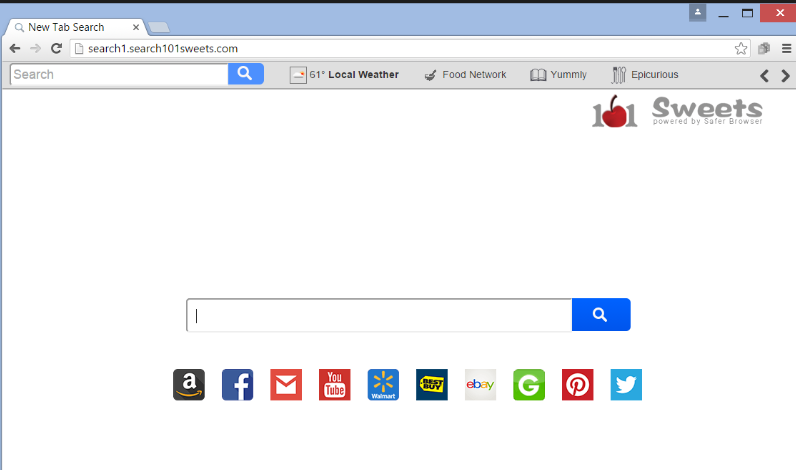
It’s rather doubtful that you installed the extension yourself knowingly, because you’d not be reading this report otherwise. It’s more likely that Search1 installed without your explicit permission via software bundles. This happens quite often because users do not pay enough attention to how they install programs. Read the following paragraph to learn how you can avoid installing these unwanted programs.
How did Search1 install on your computer?
Browser hijackers often spread via software bundles, which allows them to sneak past users and install without being noticed. Unwanted programs (adware, browser hijackers, etc.) come attached to popular free programs as extra offers, and they can install alongside the program, unless they’re manually deselected. However, most users do not deselect the offers because they are hidden during installation. To make them visible, opt for Advanced (Custom) settings when you’re given that option. If you see something attached, you need to deselect it/them. Simply uncheck the boxes, and you can continue installing the program.
All kinds of programs come attached to freeware, but we do not suggest allowing any of them to install. Software bundling is a rather sneaky method, mostly used by unwanted program developers, so it’s doubtful anything useful will be offered anyway.
Should you remove Search1?
The extension will claim to enhance your browsing experience but in reality, it will do the opposite. Your browser’s settings will be changed (whether you’re using Internet Explorer, Google Chrome or Mozilla Firefox), and the hijacker’s promoted website will be set as your homepage. The site will likely be different from your set homepage, so the change will be immediately obvious. Do not waste your time trying to change back the homepage while the hijacker is still installed as your changes will be reversed. Only after you have gotten rid of the hijacker should you reverse its changes.
The site that will be set as your homepage is pretty basic, has a search box and displays shortcuts to sites like Facebook, Gmail, Yahoo, YouTube, etc. If you were to search for something using the search engine, you’d get rather questionable results. Hijackers aim to redirect users to sponsored websites in order to generate more traffic for them, thus making them more money. However, those sites aren’t always safe. They could expose you to all kinds of malicious things, like malware or scams. This is why we would recommend avoiding pressing on any of the results generated by the questionable search engine.
The browser hijacker will also collect information about you and your browsing activity. It will collect data about what you search for, what sites you visit, etc. That information could be shared with third-parties or used to generate results/ads that you’d be more likely to click on.
Search1 removal
You should be able to manually uninstall Search1 without difficult, but if you are unfamiliar with the process, use the below provided instructions to help you. Alternatively, you can use anti-spyware software.
Offers
Download Removal Toolto scan for Search1Use our recommended removal tool to scan for Search1. Trial version of provides detection of computer threats like Search1 and assists in its removal for FREE. You can delete detected registry entries, files and processes yourself or purchase a full version.
More information about SpyWarrior and Uninstall Instructions. Please review SpyWarrior EULA and Privacy Policy. SpyWarrior scanner is free. If it detects a malware, purchase its full version to remove it.

WiperSoft Review Details WiperSoft (www.wipersoft.com) is a security tool that provides real-time security from potential threats. Nowadays, many users tend to download free software from the Intern ...
Download|more


Is MacKeeper a virus? MacKeeper is not a virus, nor is it a scam. While there are various opinions about the program on the Internet, a lot of the people who so notoriously hate the program have neve ...
Download|more


While the creators of MalwareBytes anti-malware have not been in this business for long time, they make up for it with their enthusiastic approach. Statistic from such websites like CNET shows that th ...
Download|more
Quick Menu
Step 1. Uninstall Search1 and related programs.
Remove Search1 from Windows 8
Right-click in the lower left corner of the screen. Once Quick Access Menu shows up, select Control Panel choose Programs and Features and select to Uninstall a software.
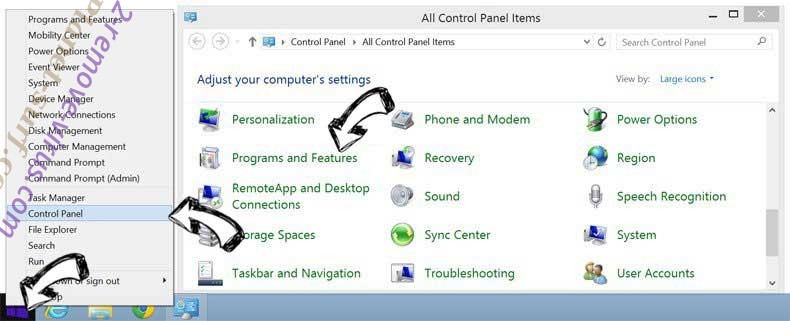

Uninstall Search1 from Windows 7
Click Start → Control Panel → Programs and Features → Uninstall a program.
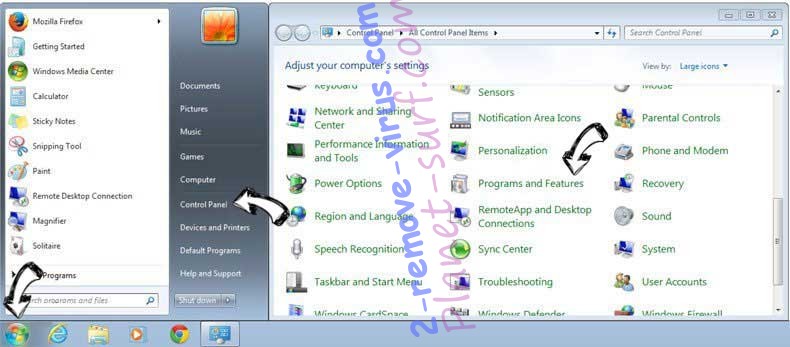

Delete Search1 from Windows XP
Click Start → Settings → Control Panel. Locate and click → Add or Remove Programs.
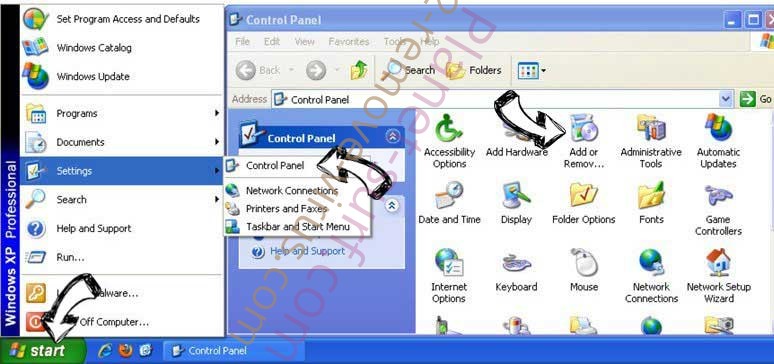

Remove Search1 from Mac OS X
Click Go button at the top left of the screen and select Applications. Select applications folder and look for Search1 or any other suspicious software. Now right click on every of such entries and select Move to Trash, then right click the Trash icon and select Empty Trash.


Step 2. Delete Search1 from your browsers
Terminate the unwanted extensions from Internet Explorer
- Tap the Gear icon and go to Manage Add-ons.

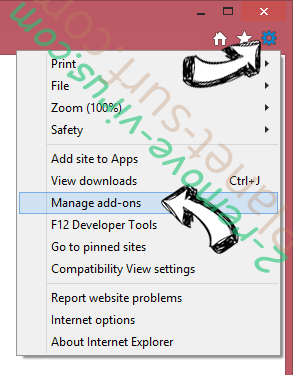
- Pick Toolbars and Extensions and eliminate all suspicious entries (other than Microsoft, Yahoo, Google, Oracle or Adobe)

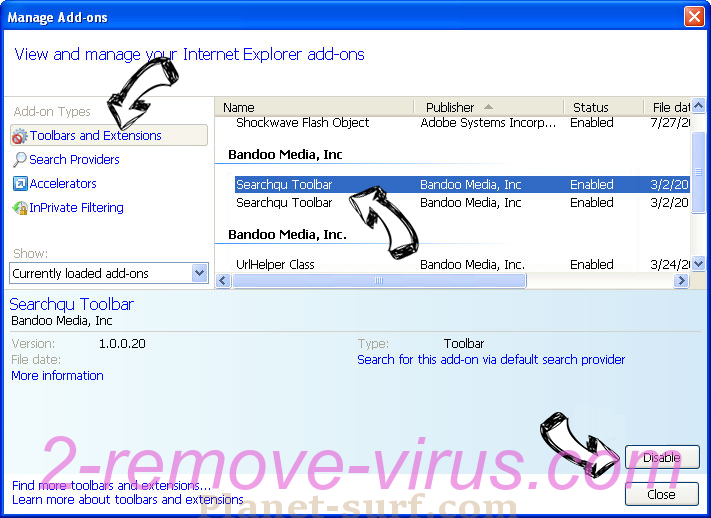
- Leave the window.
Change Internet Explorer homepage if it was changed by virus:
- Tap the gear icon (menu) on the top right corner of your browser and click Internet Options.

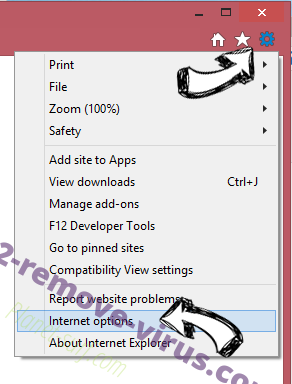
- In General Tab remove malicious URL and enter preferable domain name. Press Apply to save changes.

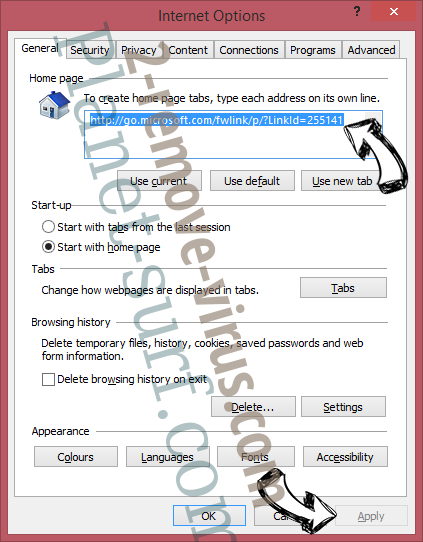
Reset your browser
- Click the Gear icon and move to Internet Options.

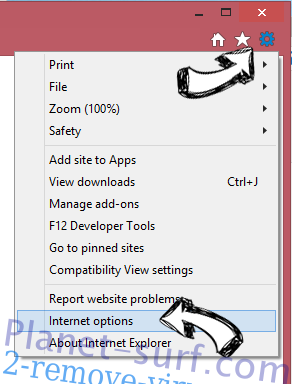
- Open the Advanced tab and press Reset.

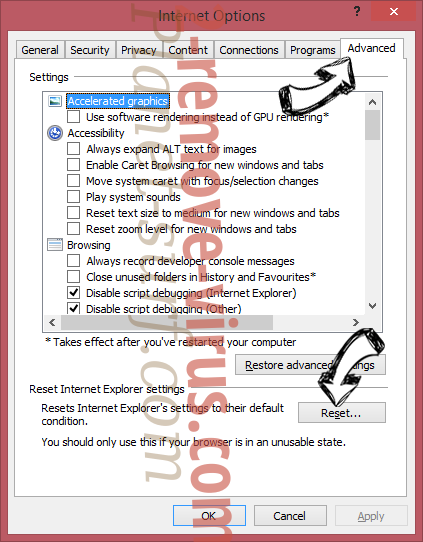
- Choose Delete personal settings and pick Reset one more time.

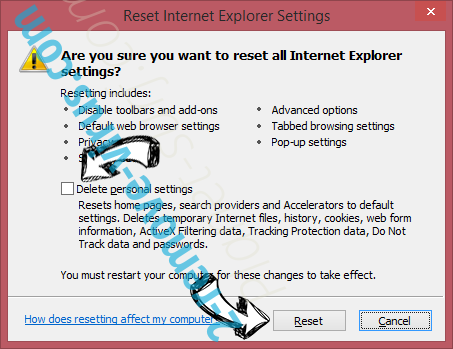
- Tap Close and leave your browser.

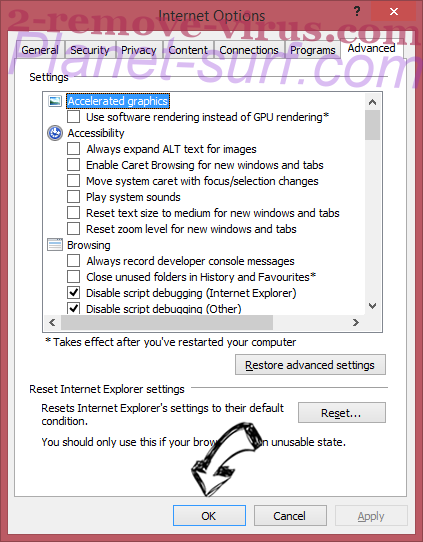
- If you were unable to reset your browsers, employ a reputable anti-malware and scan your entire computer with it.
Erase Search1 from Google Chrome
- Access menu (top right corner of the window) and pick Settings.


- Choose Extensions.

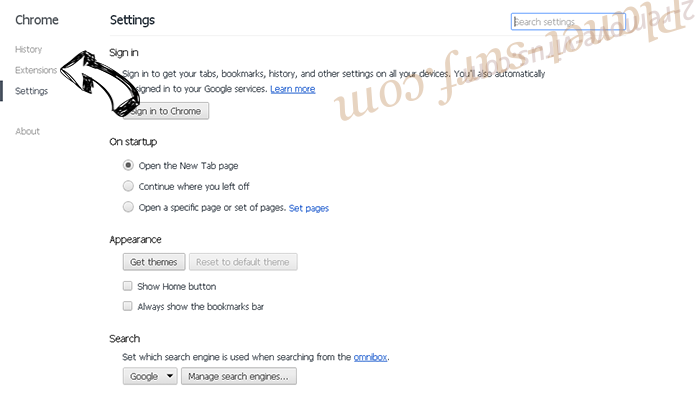
- Eliminate the suspicious extensions from the list by clicking the Trash bin next to them.

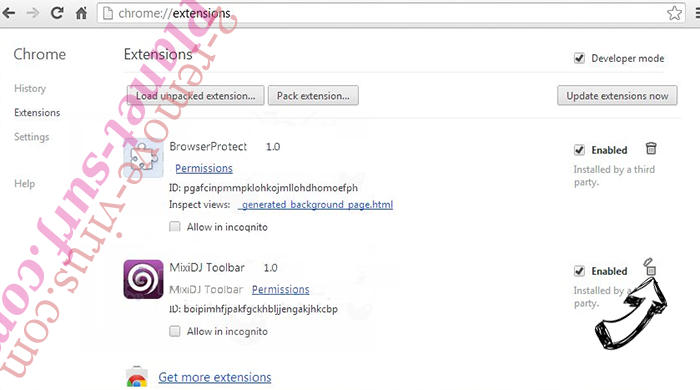
- If you are unsure which extensions to remove, you can disable them temporarily.

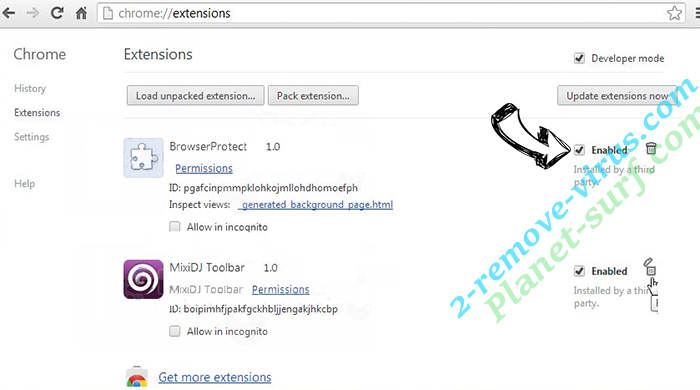
Reset Google Chrome homepage and default search engine if it was hijacker by virus
- Press on menu icon and click Settings.

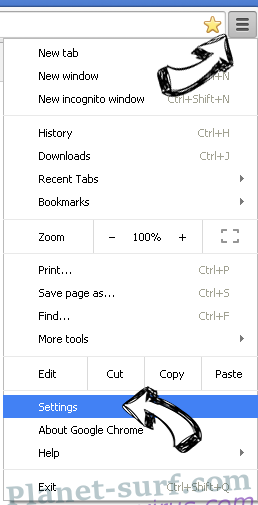
- Look for the “Open a specific page” or “Set Pages” under “On start up” option and click on Set pages.

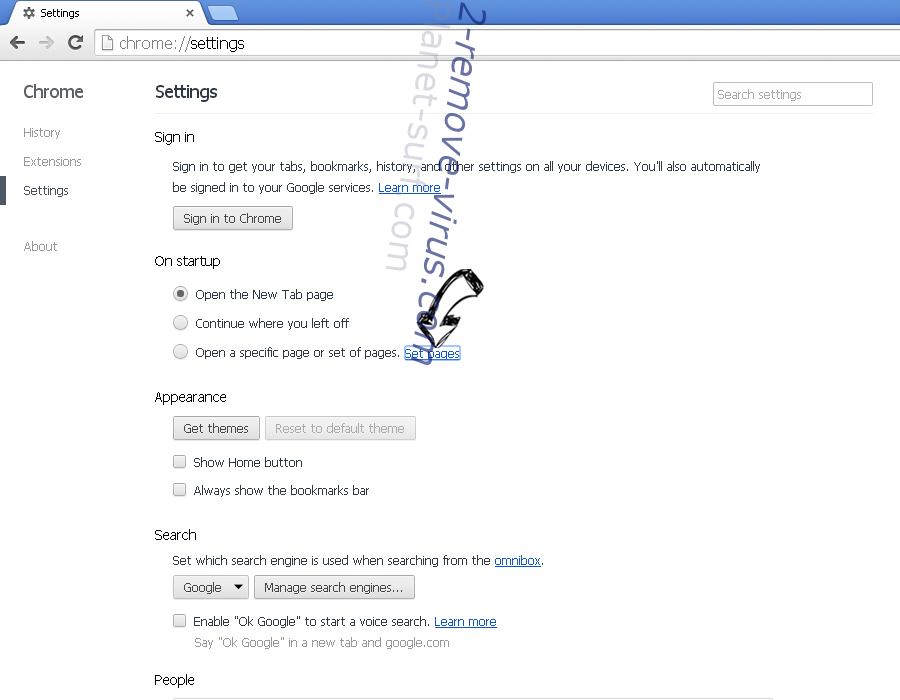
- In another window remove malicious search sites and enter the one that you want to use as your homepage.

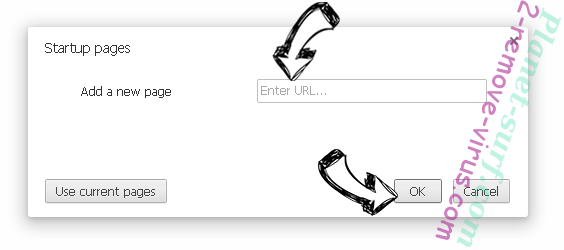
- Under the Search section choose Manage Search engines. When in Search Engines..., remove malicious search websites. You should leave only Google or your preferred search name.

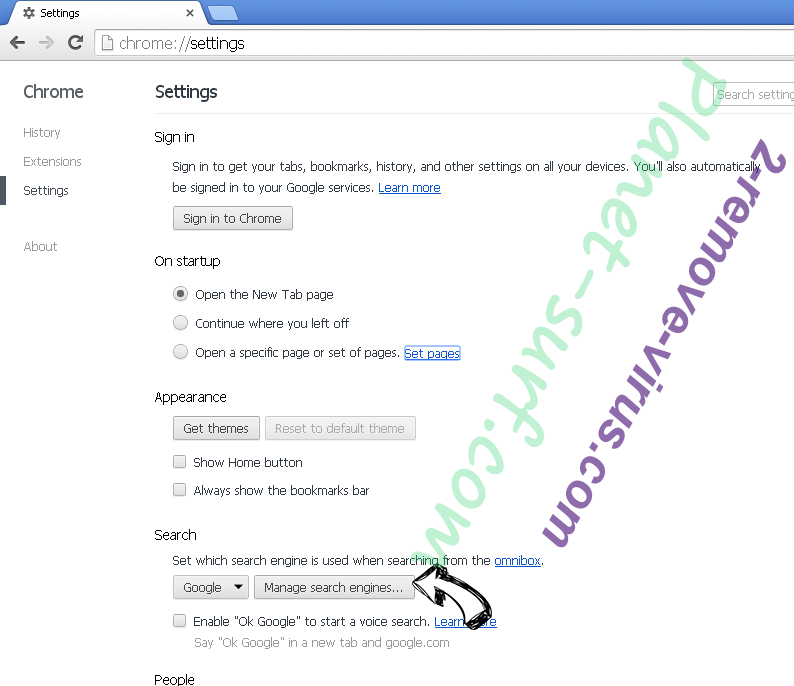

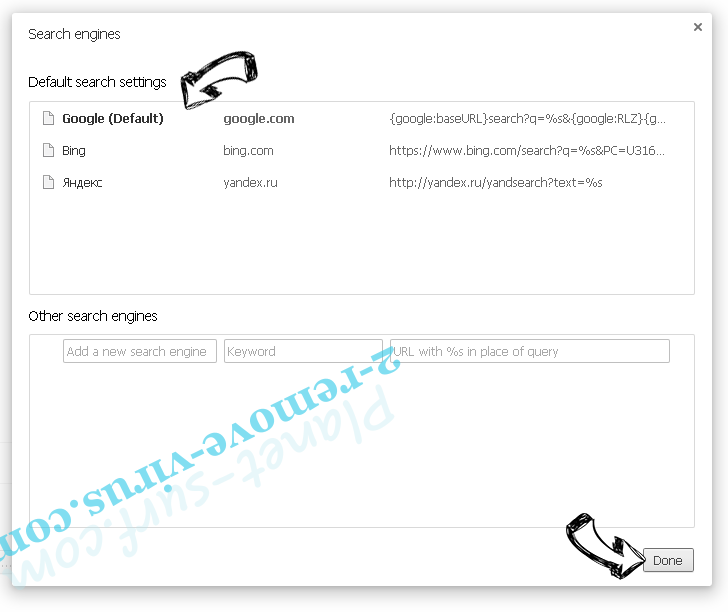
Reset your browser
- If the browser still does not work the way you prefer, you can reset its settings.
- Open menu and navigate to Settings.

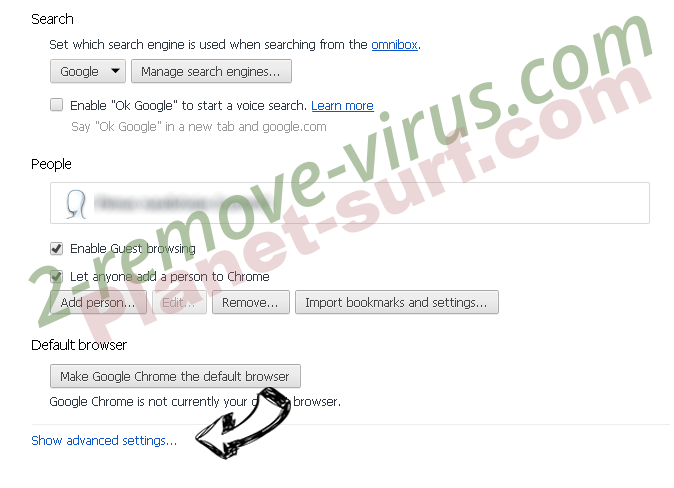
- Press Reset button at the end of the page.

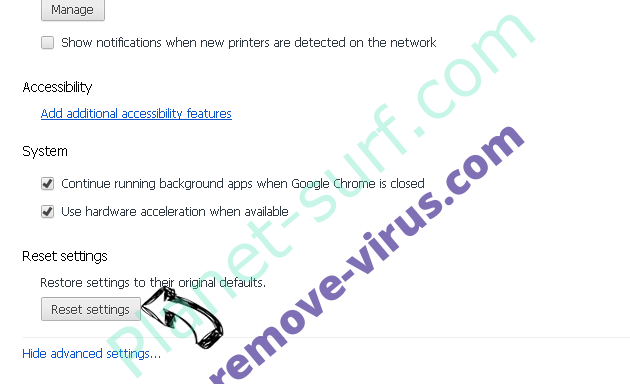
- Tap Reset button one more time in the confirmation box.

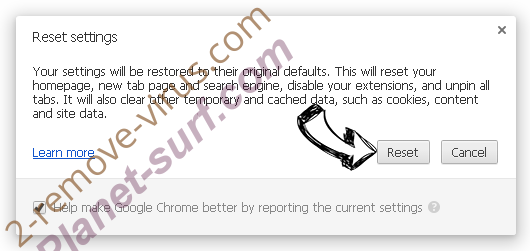
- If you cannot reset the settings, purchase a legitimate anti-malware and scan your PC.
Remove Search1 from Mozilla Firefox
- In the top right corner of the screen, press menu and choose Add-ons (or tap Ctrl+Shift+A simultaneously).

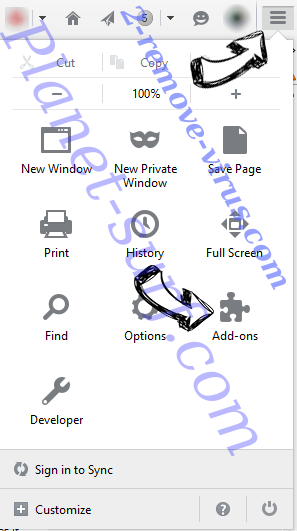
- Move to Extensions and Add-ons list and uninstall all suspicious and unknown entries.

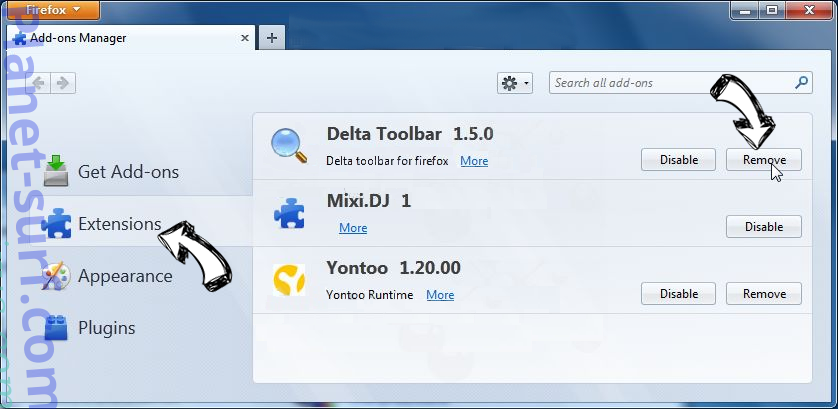
Change Mozilla Firefox homepage if it was changed by virus:
- Tap on the menu (top right corner), choose Options.

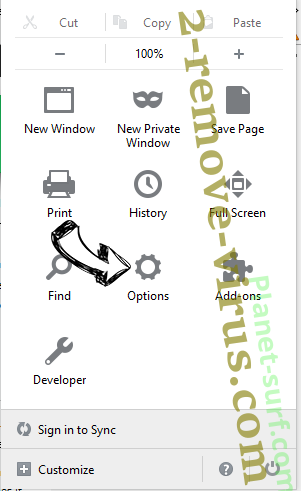
- On General tab delete malicious URL and enter preferable website or click Restore to default.

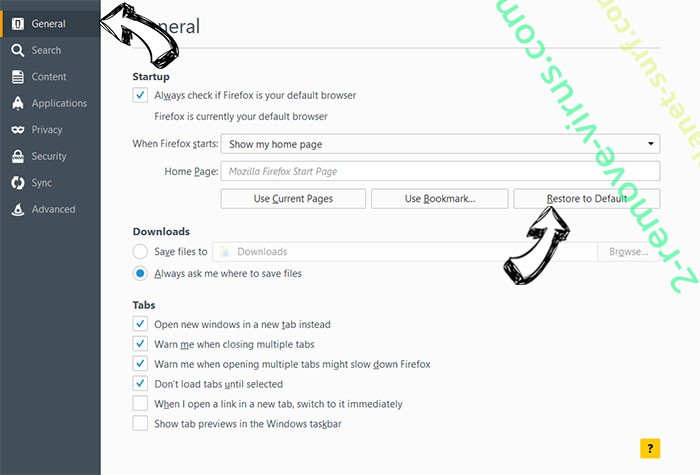
- Press OK to save these changes.
Reset your browser
- Open the menu and tap Help button.

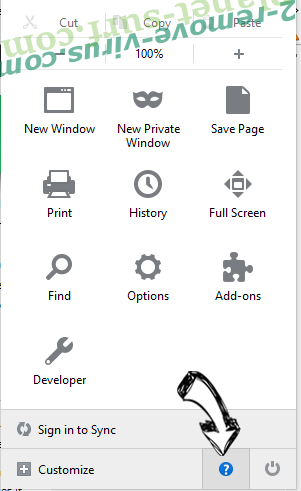
- Select Troubleshooting Information.


- Press Refresh Firefox.

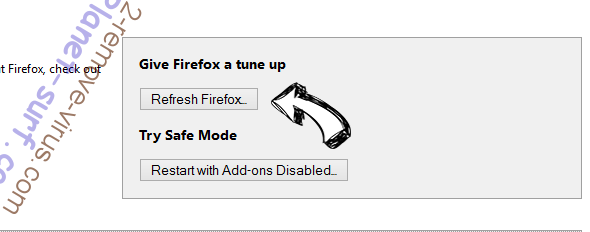
- In the confirmation box, click Refresh Firefox once more.

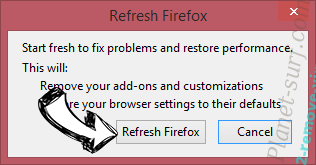
- If you are unable to reset Mozilla Firefox, scan your entire computer with a trustworthy anti-malware.
Uninstall Search1 from Safari (Mac OS X)
- Access the menu.
- Pick Preferences.


- Go to the Extensions Tab.

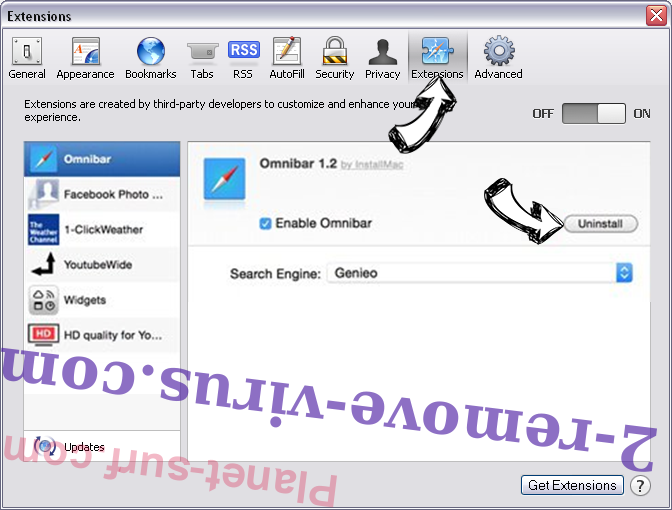
- Tap the Uninstall button next to the undesirable Search1 and get rid of all the other unknown entries as well. If you are unsure whether the extension is reliable or not, simply uncheck the Enable box in order to disable it temporarily.
- Restart Safari.
Reset your browser
- Tap the menu icon and choose Reset Safari.

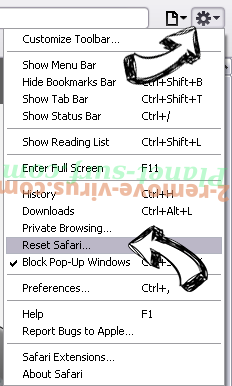
- Pick the options which you want to reset (often all of them are preselected) and press Reset.

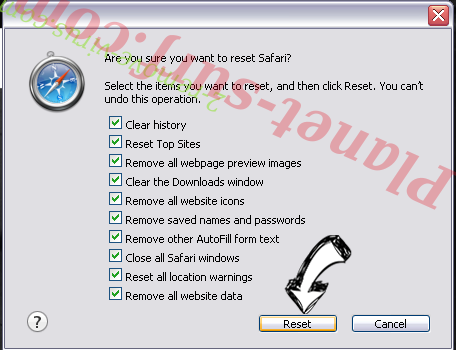
- If you cannot reset the browser, scan your whole PC with an authentic malware removal software.
Site Disclaimer
2-remove-virus.com is not sponsored, owned, affiliated, or linked to malware developers or distributors that are referenced in this article. The article does not promote or endorse any type of malware. We aim at providing useful information that will help computer users to detect and eliminate the unwanted malicious programs from their computers. This can be done manually by following the instructions presented in the article or automatically by implementing the suggested anti-malware tools.
The article is only meant to be used for educational purposes. If you follow the instructions given in the article, you agree to be contracted by the disclaimer. We do not guarantee that the artcile will present you with a solution that removes the malign threats completely. Malware changes constantly, which is why, in some cases, it may be difficult to clean the computer fully by using only the manual removal instructions.
